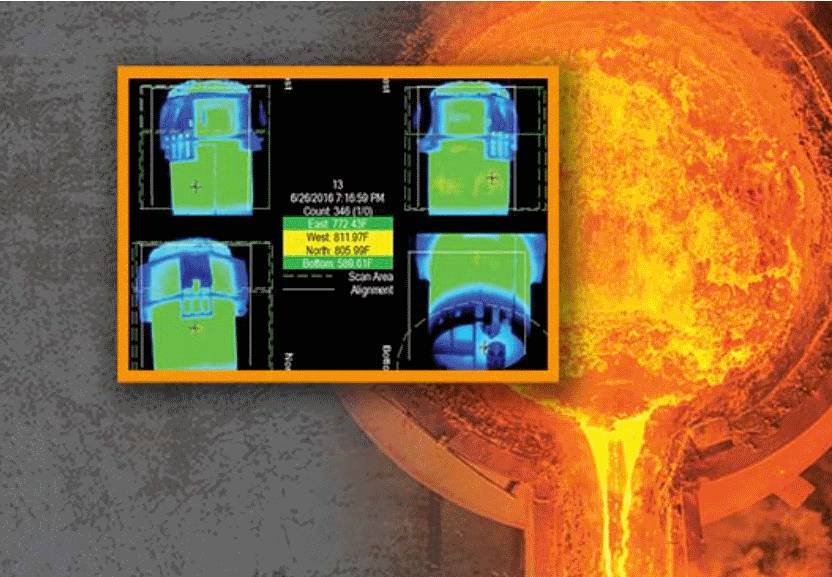One of the fundamental components of any thermo-sensitive system involves infrared and thermal imaging cameras. These are the primary input sources, especially for sensory data that is beyond the spectrum of the human eye and general temperature sensors.
All sorts of issues can be a problem in heat-generation processes, ranging from heat leakage to conductive or radiant transfer of heat that isn’t necessarily expected or intended. Ideally, thermal imaging cameras catch these problems if used correctly, helping maintain safety and reduce operational risks before they turn into a serious issue. Here are some of the best cameras available right now, both for connected systems as well as for independent use by field personnel.
The FLIR E8 – Top Choice
FLIR has been a long-standing name in the technical camera industry, well trusted by firefighting personnel, investigators, law enforcement and the military, among other customers. The cameras produced are highly intuitive, easy to handle, robust and built for hard conditions, and extremely accurate. The FLIR E8 model is a particularly interesting choice, producing an image of 76,800 pixels translating data collected by a 320 x 240 thermal-sensitive sensor. In addition, the model integrates a microbolometer for increased detailing of thermal changes, both in terms of intensity and proximity.
On the user’s end, controls are simple, powerful and effective. The temperature range goes to 20 below 0 as well as up to 250 degrees in the hot zone. A powerful battery pack easily provides a continuous four hours of battery power as well. Incredibly, all this technology is less than 1.3 pounds in actual physical weight, making the FLIR E8 easy to carry, store, and handle in the field. Still, picture saving is entirely doable as well, allowing for easy comparisons over time to track dissipation and heat behavior.
Alternatively, one could acquire the FLIR E6 model, which is a bit easier on the budget conscious, and provides similar capabilities with a smaller resolution, screen and sensor field. This particular model is more than sufficient for general, non-emergency energy auditing, heat tracking and temperature reading for field personnel. It comes with a similar extremely light physical weight and similar battery time capability for field work. And all of the details are displayed on a 320 x 240 LCD screen.
The FLIR E75-24
Designed specifically for professional energy or facilities engineer/investigator use, the E75 provides far greater capability than standard hand held cameras, being able to see and measure heat detection ranging near 1,830 degree Fahrenheit. Exactly how that would be applied by hand is another question, but it could easily be pointed through a refinery burn monitoring window and measure internal chamber heat levels instantly. The detailed IPS screen gives a wide approach with a 160 degree angle of data intake and translation, similar to a wide-angled photography camera lens. The additional technical features allows a user to add in instant notation and GPS data for accurate field records and measurements as well.
The FLIR TG167
An interesting option for facility managers and personnel who have to deal with both hot and cold conditions for accurate monitoring measurement, the FLIR TG167 provides a thermometer with real-time dynamic measurements, a sizable camera on a hand-held assembly, and an integrated microbolometer. The model focuses on lasers aiming for sensor reception and data collection, covering temperature measurements from 13 below to as much as 716 degrees Fahrenheit. The clarity is top notch on the viewing screen, and the TG167 boasts a much longer battery reliability, up to five hours at a time before a recharge is needed.
The Fluke VT04A
As an infrared imager sensor tool, the Fluke VT04A is specifically designed for industrial applications. Frequently used by inspectors in assembly systems and manufacturing chains, the Fluke VT04A helps monitors see and flag products that have temperature issues, flaws, leakages or similar in manufacturing output. Because the application range is so wide for the Fluke model, the VT04A is regularly used in multiple industries, ranging from electricians working on electrical field connection problems to mechanics trying to spot where problems are occurring in operating engines. The temperature range on the Fluke VT04A reaches up to 482 degrees Fahrenheit, and it runs on a basic quad AA battery pack. The 2-inch display camera provides the user with an easy visual measurement, a rapid refresh rate and alarms built-in to flag immediate threshold concerns. The physical dimensions of the Fluke VT04A are small, flat and easy to store in field or factory clothing pockets, and the operational interface is extremely intuitive and easy to learn.
There’s a wide choice of thermal camera options available for different applications and uses, but the above represent the models which thermal imaging consulting firms regularly rely on for practical applications as well as standard equipment recommendations on systems built for their customers and clients.
TechnologyHQ is a platform about business insights, tech, 4IR, digital transformation, AI, Blockchain, Cybersecurity, and social media for businesses.
We manage social media groups with more than 200,000 members with almost 100% engagement.









































